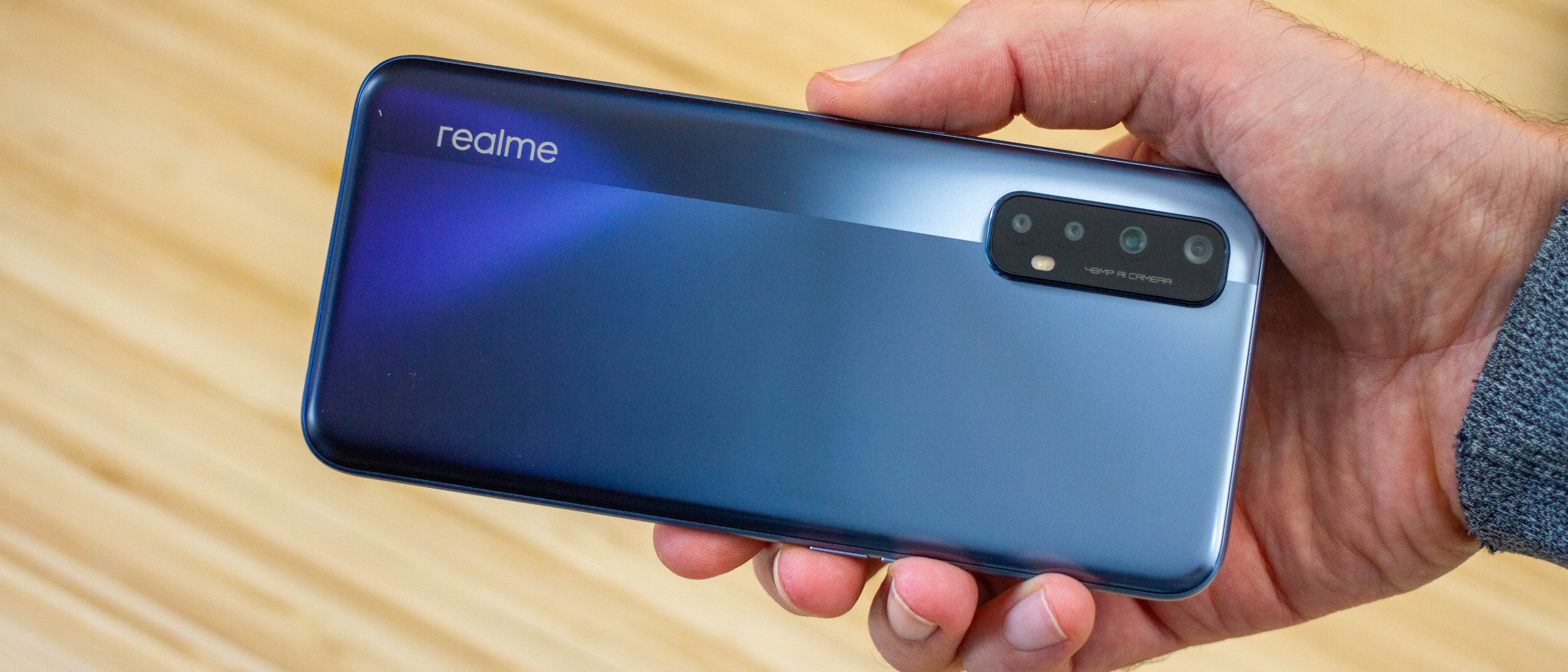TechRadar Verdict
Realme has delivered more budget phones in a couple of years than many smartphone makers launch in a lifetime, and they've all been reliably good. With its 90Hz screen, 30W fast charging and competent performance, the Realme 7 is no exception - an excellent, affordable smartphone at a great price.
Pros
- +
Plenty of storage
- +
Smooth 90Hz screen
- +
Fast charging
Cons
- -
Plastic build
- -
Good, not great camera
- -
Mono speaker
Why you can trust TechRadar
Two-minute review
The Realme 7 is an affordable smartphone that covers the basics.
With its ample 6.5-inch screen, 90Hz refresh rate and shiny new MediaTek Helio G95 chipset, it reads well on paper, fending off competition from comparably priced phones like the Samsung Galaxy A21S and Honor 20e.
If you’re reading this review in India, the smartphone landscape’s a bit different and there are more players vying for your cash in the sub-£200 (about $260) space. In the UK, however, there’s a smaller pool and potentially, a bigger opportunity for the Realme 7 to swoop in and rank well.

Price and release date
Design
Display
Cameras
Performance
Battery
Should I buy it?
Fire it up and the 90Hz display is a great introduction to the Realme 7 experience, even if it’s combined with LCD technology. No, it isn’t the finest screen we’ve seen - it’s a touch washed out at certain angles and the Realme 7 Pro’s OLED panel wipes the floor with it. That said, for the £179 (about $230 / AU$320) asking price, it’s everything it needs to be.
With its MediaTek Helio G95 chipset, this stops being a review of just a phone, and becomes a testament to how good Qualcomm’s competitor, MediaTek is now. With benchmarks comparing like-for-like with the Realme 7 Pro and pricier phones like the Poco X3 NFC, it’s off to a great start. It also handles Genshin Impact without much in the way of stutter, which is pretty immense for a phone of this price.
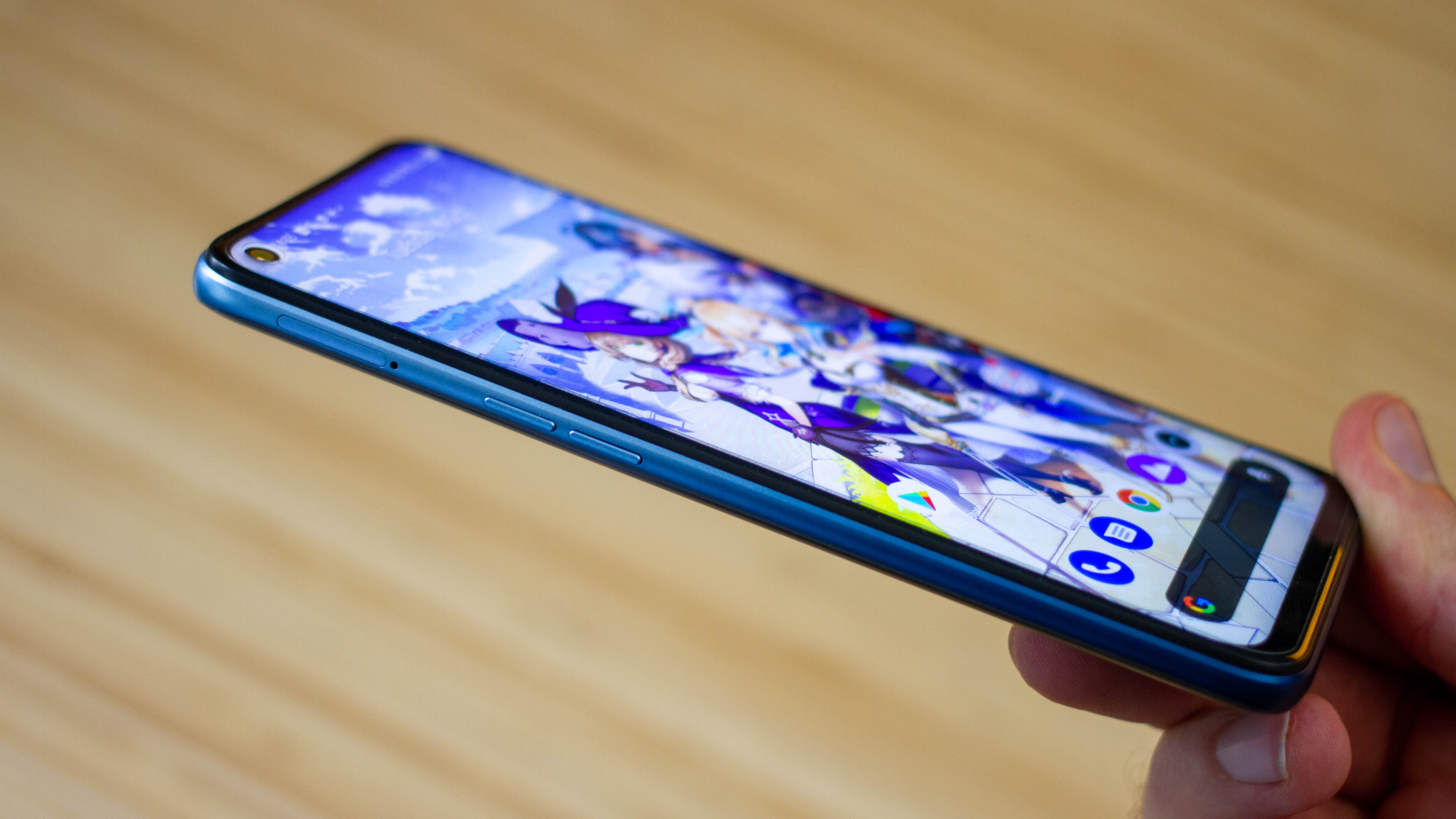
There’s just one difference between the Realme 7 in India and in the UK, and that’s the camera. While in India, the phone gets a 64MP camera - Sony’s new IMX 682 sensor, in the UK, it’s the tried and tested 48MP IMX 586. Irrespective, with a glut of shooting modes and competitive performance, not to mention video stabilization, for the price, it holds its own.
Add to the mix a huge 5000mAh battery and 30W fast charging, and there’s no two ways about it, the Realme 7 is a cracking phone and could be best-in-class for a certain kind of user.
Sign up for breaking news, reviews, opinion, top tech deals, and more.
Realme 7 price and release date
Launched in India on September 3, and in the UK on October 7, the Realme 7 is available in two configurations in India, and three configurations in the UK.
There's currently no sign of the phone being on sale in the US or Australia, but we'll update this review if we hear more on those markets.
The base variant with 4GB RAM + 64GB storage costs £179, a 6GB RAM + 64GB option costs £199 or Rs 14,999, while the 8GB + 128GB model retails for £239. Color options include Mist White and Mist Blue, with UK retail channels including Amazon UK and Realme.com, with shipping starting from October 21.

Design
- Matte plastic back
- Comfortable size and weight
- Side-mounted fingerprint scanner
Want some racing stripes? The Realme 7 delivers on va-va-voom, while keeping things classy. Ditching the high-gloss holographic fingerprint-loving finish of old, the brand’s new design language is elevated.
Around the back is a matte finish for starters which looks rich and feels less tacky than that of the Realme 6 and X50 Pro. Something like frosted glass’s plastic sibling, it does a respectable job of repelling fingerprints. The vertical stripe that cuts through the camera surround looks striking (in a good way), and leads the eye to the brand’s trademark insignia on the back of its phones.

Yes, there’s a camera bump around the back of the Realme 7. It’s tall and slender, and while it isn’t too prominent, when you sheath the Realme 7 in the included case, it disappears completely. With a plastic frame - also matte, this is definitely not a premium feeling phone, but at its price, combining its curvy design, ‘not-too-big not-too-small’ body and great weighting, it’s exactly what it needs to be to impress.
Display
- 6.5-inch, 90Hz, 20:9 display
- 1080 x 2400 resolution
- Gorilla Glass 3
The Realme 7 and Realme 6 sport the same 6.5-inch LCD screen with 1080 x 2400 resolution, so there’s nothing revolutionary here. That said, with its 90Hz refresh rate, that doesn’t hold it back from beating out 60Hz competition from other manufacturers.

While the 7 Pro got a shiny OLED, the vanilla Realme 7 sticks with LCD and keeps costs down. In turn, blacks are a bit grey at full brightness and colors are muted when the phone’s set beside an OLED for comparison. We found it to be responsive to the touch for the most part, and clarity is exactly where it needs to be, though it isn’t the brightest panel we’ve used.
Meanwhile, the addition of a 90Hz refresh rate does add something to the experience - menus scroll more smoothly, the day to day UI interaction feels instantaneous and this lends to offset many gripes associated with LCD panels.
A pre-fitted screen protector combines with Gorilla Glass 3 protection to keep the Realme 7’s display scratch-free and in the top left is a hole punch selfie camera. This all comes together to create an immersive, competitive screen experience, even if it’s one we’ve seen before.
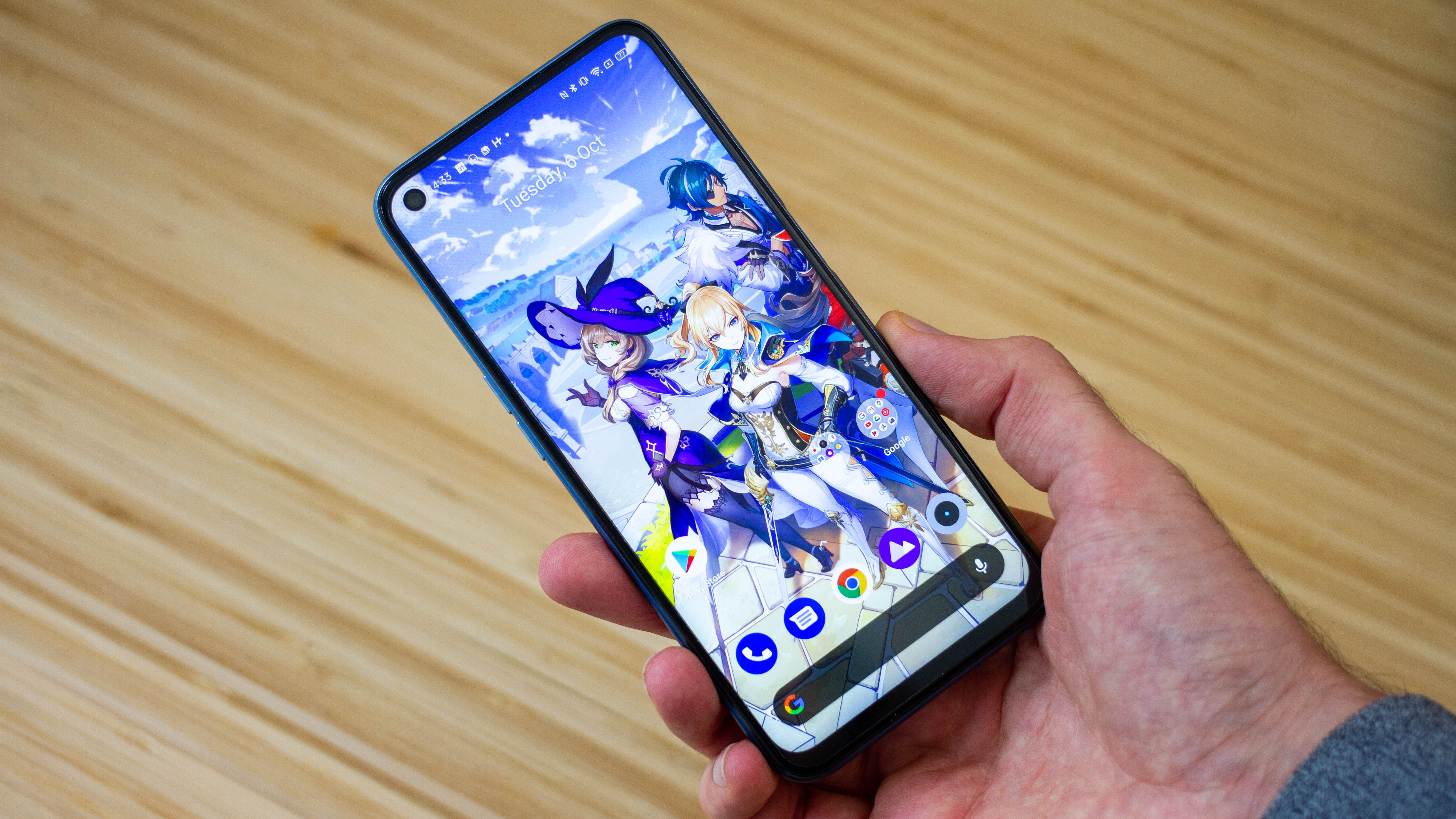
Cameras
- Primary 48MP IMX 586 sensor
- 8MP ultrawide + 2MP macro + 2MP depth sensor
- 16MP selfie camera
The key difference between the Realme 7 UK and Indian versions is the phone launched in India packs a 64MP camera, while UK Realme 7 ships with a 48MP sensor - a resolution seen across everything from the Honor View 20 in 2019, to the OnePlus 8 in 2020. Not all implementations of a 48MP sensor are the same, and with no OIS, we’re not expecting OnePlus 8 performance here.
Thankfully, the Realme 7 camera is at least good enough. Its primary sensor is matched with an f/1.8 lens, and is accompanied by an 8MP ultrawide camera with an f/2.3 lens. There’s also a fixed-focus macro camera and a depth sensor - both clocking in at 2MP.
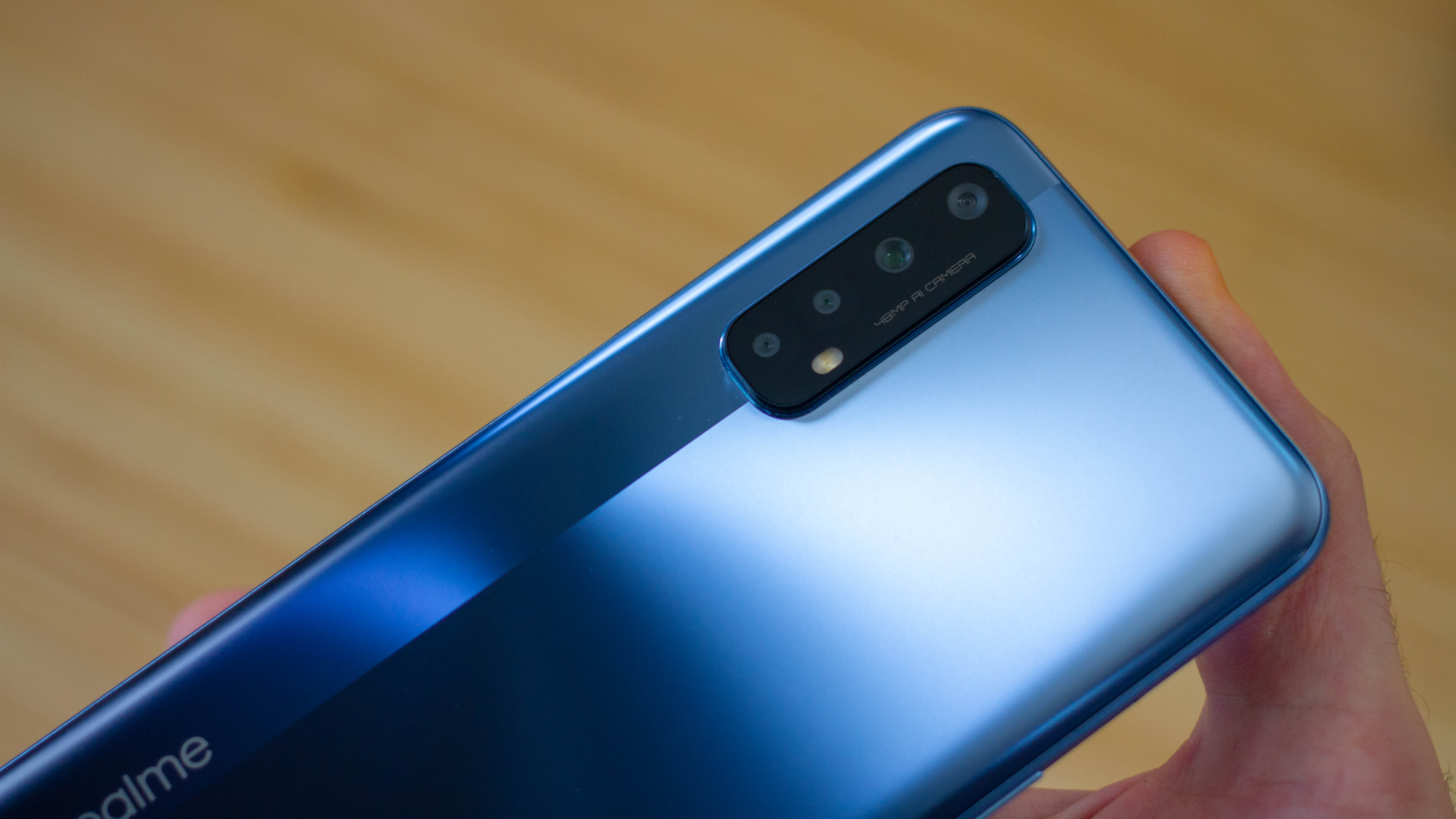
In well-lit scenes, Realme pumps up the saturation and contrast a fair bit, so pictures look super zingy. They're social media ready, and packing pleasing depth - it’s a good start, but any discerning photo enthusiasts who wants to get the best from the phone will need to fire up Expert mode every now and then. Noise is handled respectably and clarity is on-point, making for a very competitive camera for the price.
Night shooting is helped along by a Night mode, which works well, capturing 3-4-second, long exposure handheld photos to eke out noise. Even in well-lit scenes, this can boost detail and dynamic range so it’s one to have to hand, and naturally, there’s a flash on-board too. The phone’s fixed-focus 2MP macro lens is only ever fine, delivering usable shots when there’s an abundance of light. Anything more challenging and you should avoid it at all costs. Thankfully, the depth sensor is welcome if it has anything to do with the pleasing soft focus most shots taken on the Realme 7 enjoy within a 1m range.
With a 16MP front camera, the Realme 7’s selfies are sharp without being painfully pore-tastic, though selfie photos and videos do struggle in darker scenes.
Stable video is a recurring theme of the new Realme 7 and 7 Pro. Just like the Poco X3 NFC, the Realme 7’s footage is smooth by default, which means despite grain creeping in pretty readily (indoor video doesn’t look great) the results are still both usable and competitive. Video is captured at up to 4K resolution (30fps) or Full HD (60fps), with Ultra Steady capture capped at 1080p.
Camera samples

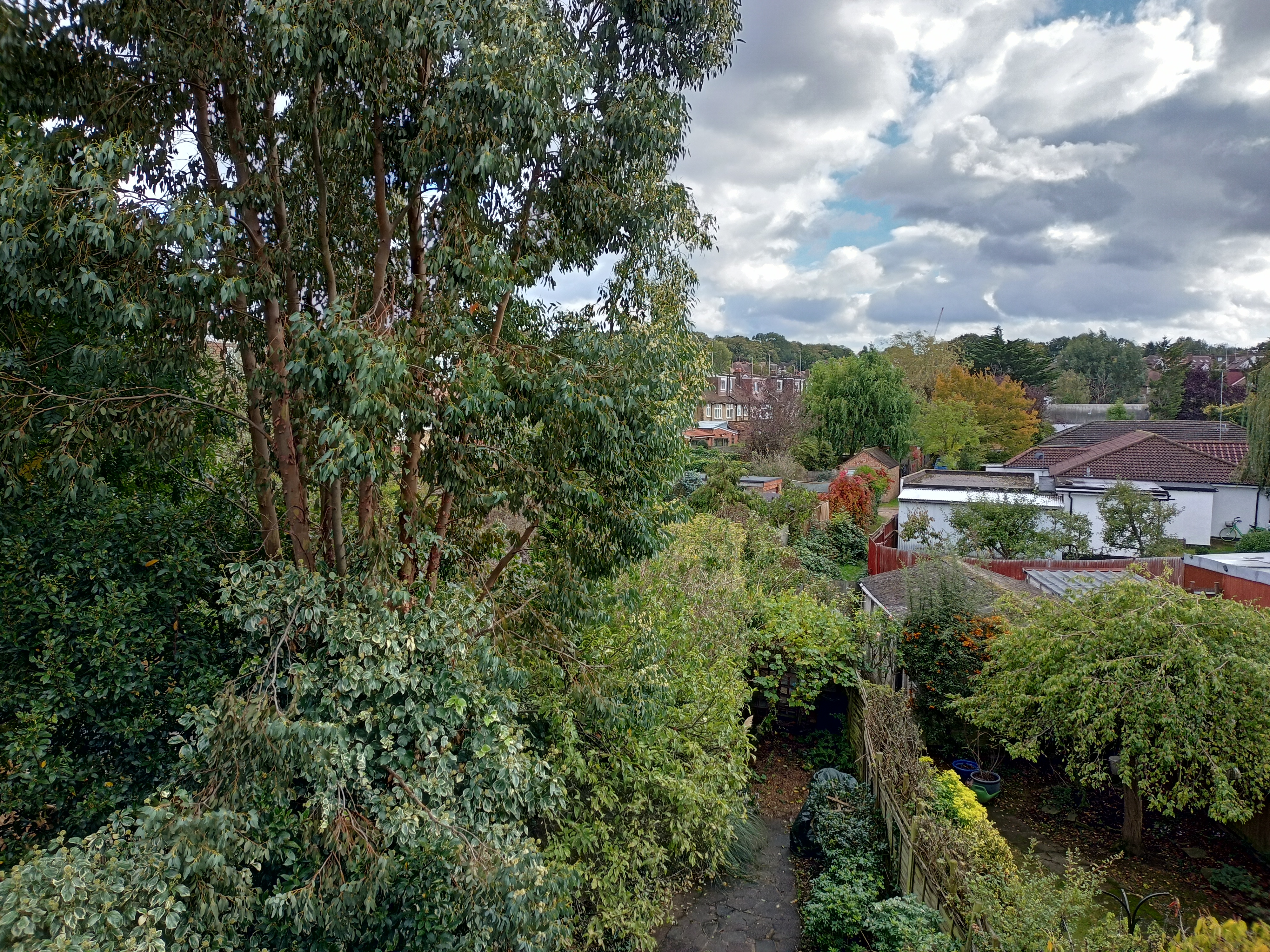
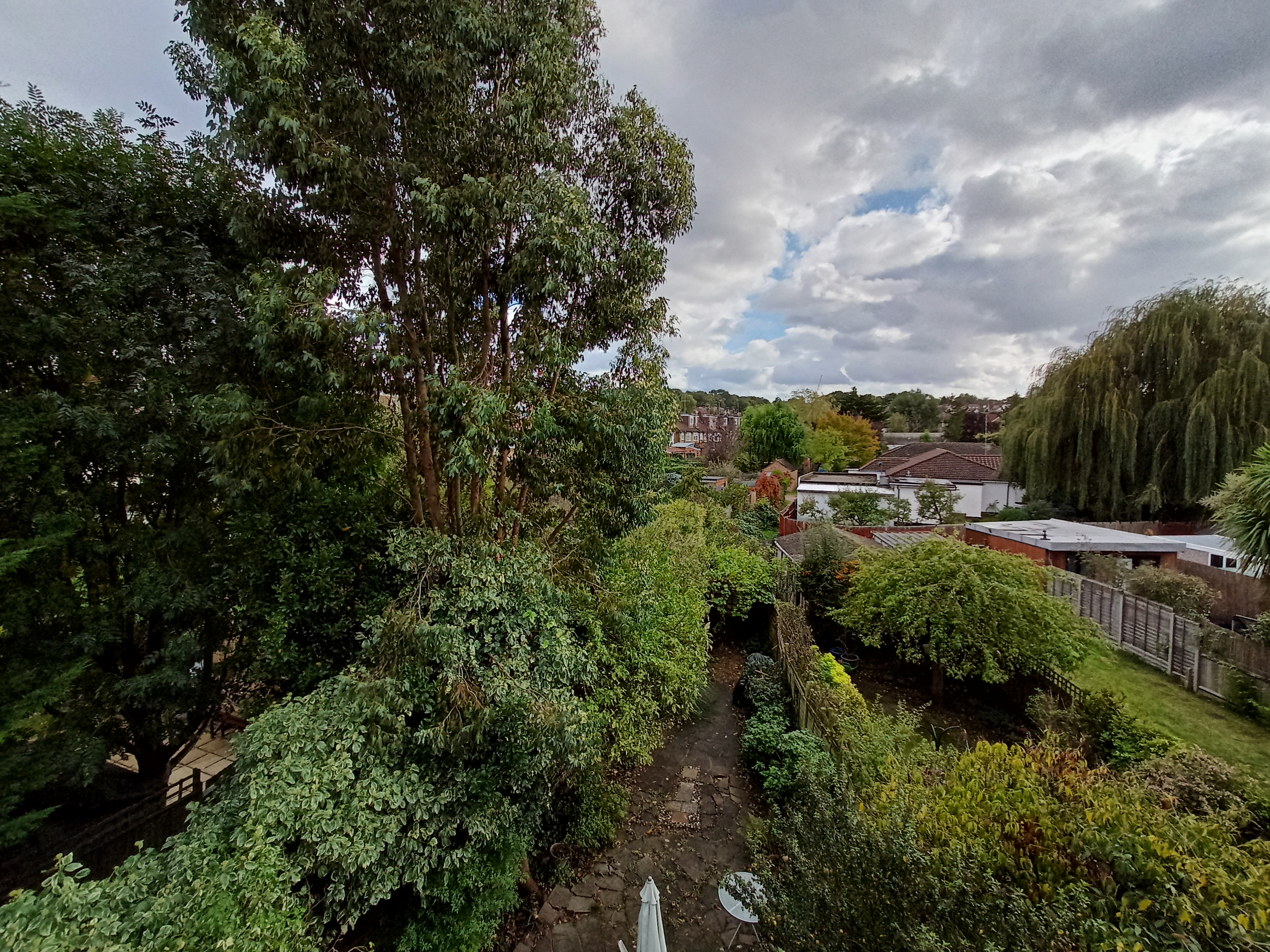

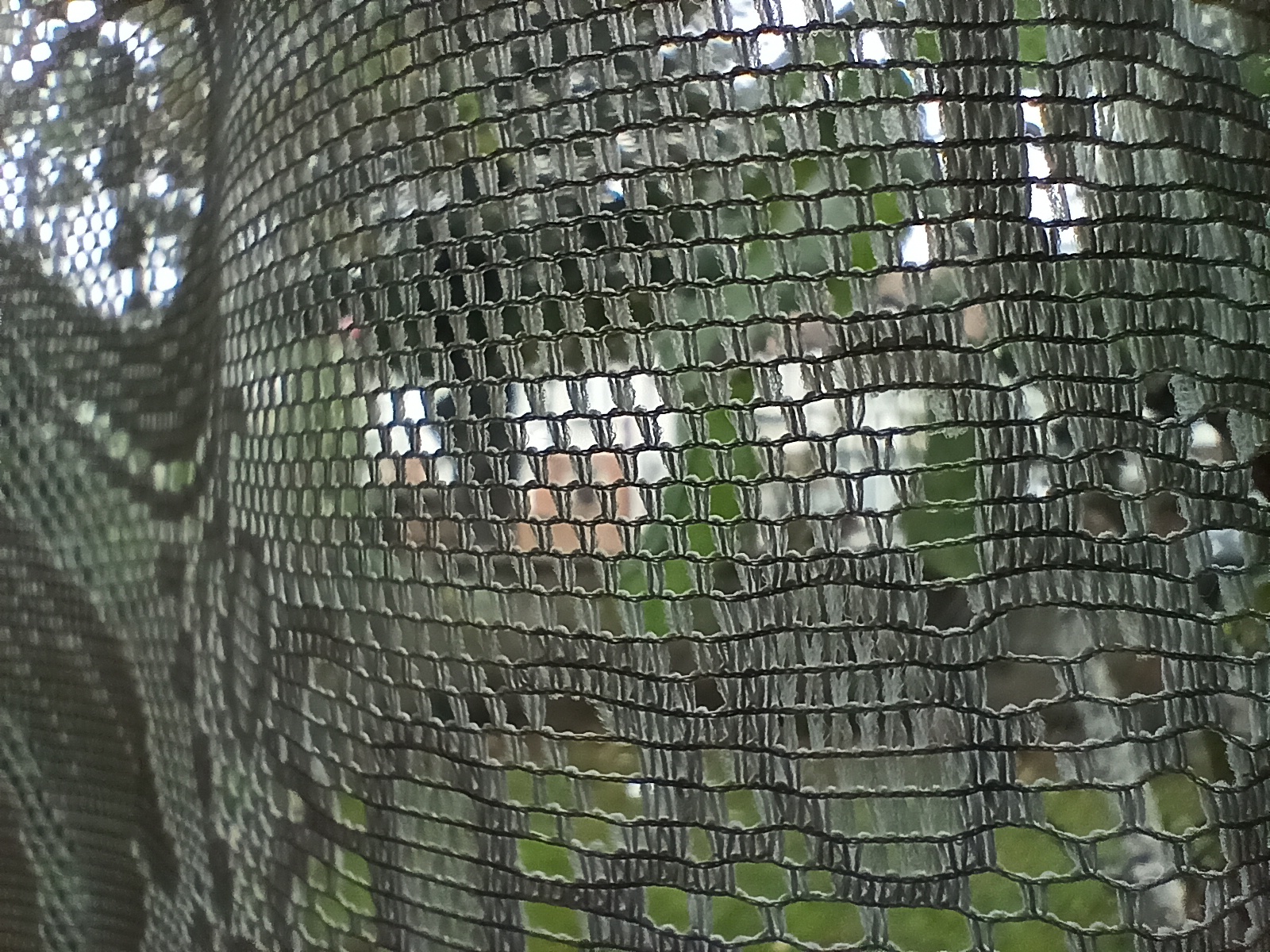
Specs and performance
- MediaTek Helio G95 chipset
- 4GB, 6GB or 8GB RAM
- 64GB or 128GB storage
Powered by the new MediaTek Helio G95 chipset, the Realme 7’s power is actually very comparable to that of its pricier sibling, the Qualcomm Snapdragon 720G-powered Realme 7 Pro.
With a Geekbench score of 515 single-core and 1625 multi-core, the Realme 7 is perfectly in line with the Poco X3 NFC, which starts at £199, so even outside the Realme family, it punches above its weight.

In turn, we were able to play Genshin Impact for an hour at 60fps with only a few stutters - impressive given the scale of the game. Ramp up the graphics settings all the way to max and the game still plays, just with a more slowdown. The Realme 7 also stays cool, with the phone’s carbon fibre cooling system seems to be doing its job well.
The mono speaker at the base of the Realme 7 Pro is accompanied by a USB-C port and a 3.5mm headphone jack. It’s easy enough to cover up when gaming, though is plenty loud and its quality is passable. The side-mounted fingerprint scanner and power button combo also come together well, and there’s face unlock support too.
With up to 128GB storage and microSD card support, in addition to two SIM slots, Realme loads up its latest phones with plenty of space and versatility.

Battery life
- 5,000mAh battery
- 30W Dart Charging
- 1-2 days on a single charge
The Realme 7 is loaded up with one of the biggest batteries around, a 5,000mAh cell. Sweeter still, Realme’s Dart Charging makes a return, with 30W speeds delivering a full charge in little over an hour, and 50 percent in under 30 minutes.
There really is very little to say about the battery, given the fact it's so very reliable. 90 minutes of video playback at max brightness drained the Realme 7 by just 11 percent, and in regular use, the phone lasts a comfortable day, and can stretch to two of used sparingly. Dip into the power saving modes in the settings, and we wouldn’t be surprised if you could stretch it out into a third day.
Should I buy the Realme 7?

Buy it if...
You want to game on a budget
The Realme 7 could be the best gaming phone at its price with its MediaTek Helio G95 chipset. It keeps up with phones £100 dearer, and also manages to keep its cool.
You’d like a 90Hz screen without a OnePlus Nord price
Admittedly, the OnePlus Nord packs a beautiful OLED, but at its asking price of around £200 less than the Nord, not many smartphones sport screens that cam match the Realme 7’s high-refresh-rate goodness.
Storage is important to you
Most phones in the Realme 7’s price sport either 32GB or 64GB storage. That’s half that of the Realme 7, which starts at 64GB and climbs all the way to 128GB. Add to the mix microSD card support and low storage warnings will be a distant dream - or nightmare
Don't buy it if...
You want an optical zoom on a camera
Admittedly, you won’t find optical zoom on a 2020 phone at this price point, so if getting close to a subject is a huge consideration, save up for a phone like the Realme X3 SuperZoom, which features a class-leading 5x periscope zoom.
Screen quality is a big concern
If screen quality is your main consideration, you watch a lot of video or read in bed, so would benefit from a higher quality display with a better contrast ratio, the Realme 7 might not fit the bill. Opt instead for a Realme 7 Pro. Its AMOLED panel is best-in-class, and what it lacks in high refresh rate, it makes up for in pure picture quality.
Plastic puts you off
As well made as the Realme 7 is, it is a plastic phone, and as soon as you pick it up - you know it. There aren’t many affordable phones that are made of glass, however 2019’s Redmi Note 8T is still a head-turner, and while it isn’t as powerful, it features the same camera sensor and can be had for a bargain now it’s been on the market for a while.
First reviewed: October 2020

Basil Kronfli is the Head of content at Make Honey and freelance technology journalist. He is an experienced writer and producer and is skilled in video production, and runs the technology YouTube channel TechEdit.
